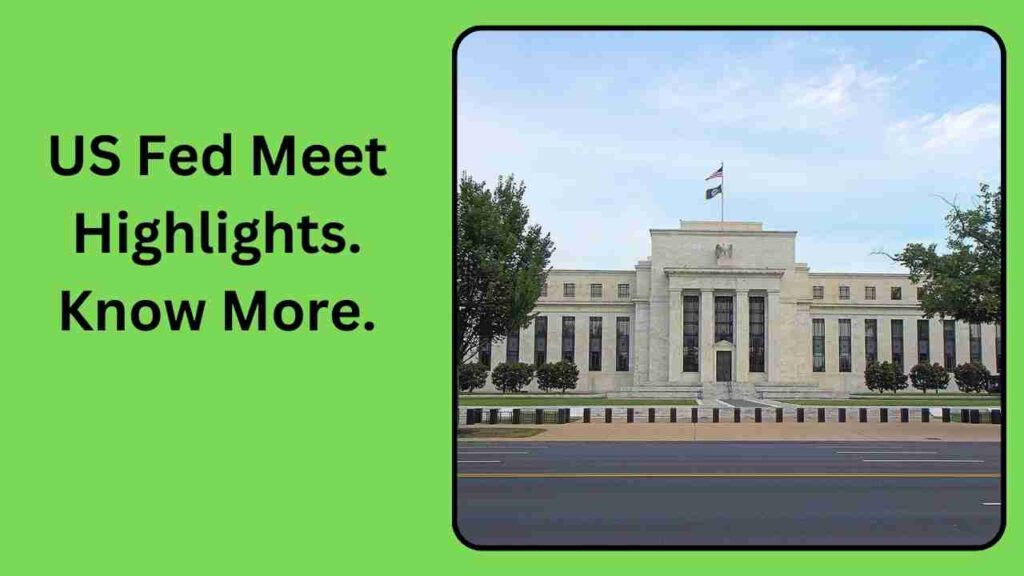US Fed Meet Highlights : In the latest US Federal Reserve meeting, chaired by Jerome Powell, the rate-setting panel maintained interest rates steady at a 23-year high, marking the fifth consecutive meeting without change. Despite persistent inflation concerns, the FOMC signaled its expectation for three rate cuts in 2024, underlining its commitment to managing economic stability amid rising price pressures.
US Fed Meet Highlights : Powell-led FOMC keeps key rates unchanged at 5.25-5.50% for 5th straight meeting

Key Highlights:
- The FOMC kept benchmark interest rates unchanged at 5.25-5.50%, in line with market expectations.
- Despite inflationary pressures, the Fed anticipates three rate cuts in 2024, signaling a cautious approach to monetary policy.
- US GDP growth forecast for 2024 was revised upward to 2.1%, reflecting optimism about economic recovery.
- Headline inflation forecasts remained steady, but core inflation projections rose slightly to 2.6%.
- Powell emphasized the Fed’s intention not to reduce rates until inflation shows sustainable movement towards the two percent target.
